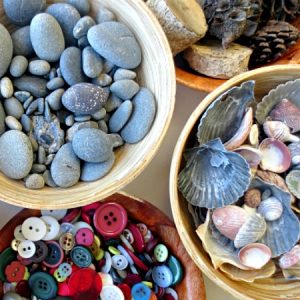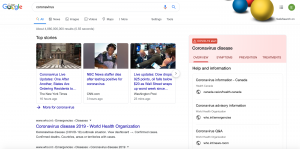
Course Reading:
Resnick, M. (2007). All I really need to know (about creative thinking) I learned (by studying how children learn) in kindergarten. In Proceedings of the 6th ACM SIGCHI conference on Creativity & Cognition (pp. 1–6). New York, NY, USA: ACM. http://dor.org/10.1145/1254960.1254961 (This link is updated from the course outline.)
- in a society characterized by uncertainty and rapid change, the ability to think creatively is becoming the key to success and satisfaction (learning to come up with innovative solutions to unexpected situations)
- kindergarten approach to learning should be applied to all other levels (spiralling cycle of Imagine, Create, Play, Share, Reflect)
- children imagine what they want to do, create a project based on their ideas, play with their creations, share their ideas and creations with others, reflect on their experiences – all of which lead them to imagine new ideas and new projects
- as students get older, their materials need to change (digital technologies can play a transformative role here)
- IMAGINE
- materials need to be multipurpose and not too specific that it directs how kids are supposed to engage with it
- CREATE
- provide kids with more opportunities
- more open ended materials where kids have to be creative
- PLAY
- plan and learning CAN and SHOULD be intimately linked
- focus should be on ‘play’ and ‘learning’ (things you do – active learning) rather than ‘entertainment’ and ‘education’ (things that other provide for you – learner is passive)
- SHARE
- generally received less emphasis in later years of schooling
- REFLECT
- focus in Reggio Emilia, Italy is the way their encourage children to reflect on their design process and thinking process (shown in drawings and pictures on the walls)
My Experiences:
How do I engage students in this process in my context?
For the past 5 years I have taught some combination of grades 1, 2, and 3. Ever since the beginning, I have strongly believed in the inclusion of play in the classroom. Early on in my career I was doing a lot of free play once a week – and kids viewed it as an opportunity for ‘free time’. As I have gained experience and understanding, I have included it into my practice daily, as well as integrated it into as much of our academic content teaching as well.
This year I teach grade two and I decided to alter our morning routine. It used to be a worksheet activity last year, but this year I wanted to provide students an opportunity for a gently entry in the morning as well as an opportunity to connect with their peers. So each morning this year I have set out activities for the students to engage in. These materials I have been collecting over the years and throughout the year I have added new ones and taken out other ones that don’t seem to capture their attention.
For literacy, I have started engaging students in creative thinking and story ideation with loose parts. This is a tactic in which you provide students with a variety of materials with the hopes that it will help them create a visual of their story, so they remember it, and gain creative ideas for new stories. I started this by modeling my own and having them recreate a story. Then we transitioned into creating visuals a part of their weekend, and then finally have been moving into more creative stories of their own.
For our Units of Inquiry (Social Studies and Science curriculum) I have also worked in some form of creation for them to show their understanding of the concept. In the past I have done:
- using materials provided, move a LEGO man 1 meter and explain the forces that are helping him move (Content: Force in Motion)
- create a story of a water droplet moving through the different parts of the water cycle (Content: Water Cycle)
- create a way to share tourism information about a province of your choice – using low tech or high tech materials (Content: Regions of Canada)
For math, I have found that students really need to manipulate materials in order to develop a concrete understanding of number sense. A routine that I continually come back to is called Counting Collections. It has students gather a collection of the same materials (# is dependent on the level of understanding). Students then use their understanding of number to find ways to skip count and reach the total number in the collection. They complete this routine in partners. This way, it ensures students are discussing their mathematical thinking and collaborating on ways to solve the problem (how they are going to count, who is going to do the counting, who is going to do the grouping, etc.).
I am by no means and expert in this, and I am always inspired by my primary colleagues at my school and across districts!
I strongly believe that in order for students to develop a solid foundational understanding of concepts, they need to move through the process of imagine, create, play, share, and reflect.
What materials do I use?
- LEGO
- blocks
- Keva Planks
- Magnatiles
- Geometric shapes
- Marble Run
- Kinetic Sand
- Water beads
- Paper and Paint
- Loose Parts (popsicle sticks, buttons, feathers, sea glass, small blocks, leaves, tile, corks, mirrors, peg people, felt mats, etc.)
My Perspectives:

How could maker-spaces support creativity and innovation in my learning context and/or project?
As you can tell from my answers above, I think the use of maker-space activities can help support the development and acquisition of creativity and innovation in all learners. As mentioned by one of our guest speakers this week, we have so much content to get through in a week – especially in intermediate grades – so it’s important to integrate play and exploration into already existing content acquisition across the subjects.
What kinds of digital tools encourage creativity and innovation?
I do not have much experience with using digital tools to encourage creativity and innovation other than platforms to show their understanding of a concept – where they can create a presentation of some sort (e.g. Adobe Spark Video, Book Creator, etc.).
The article mentioned the use of Scratch as a way for students to create a story using code.
I would LOVE to hear any other suggestions of digital tools to engage students in the creation and innovation realm of learning!






Recent Comments